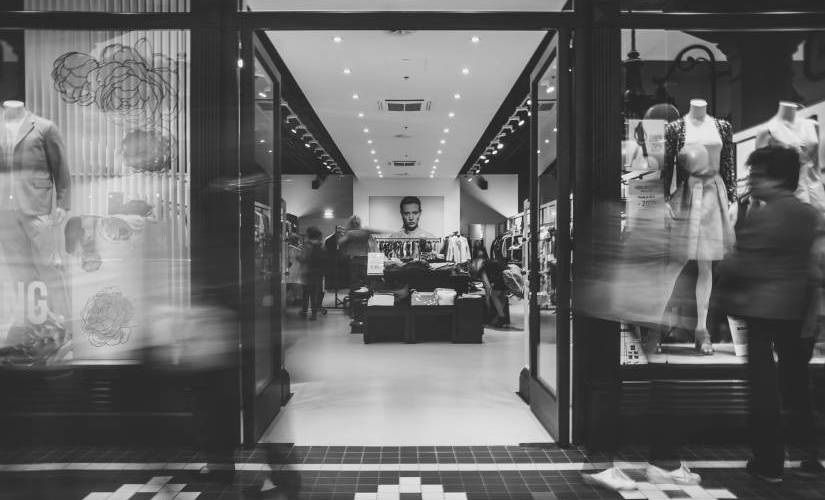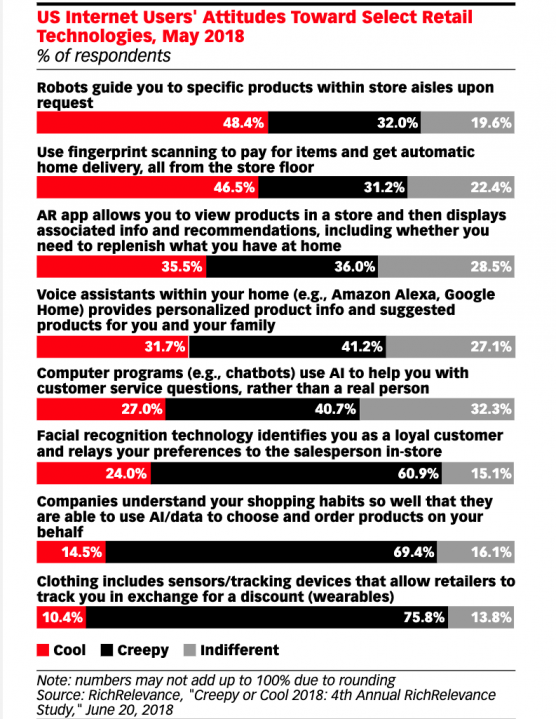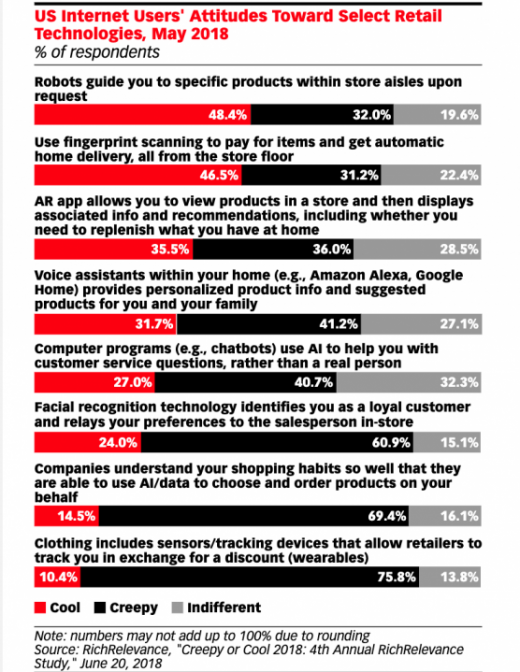Technologies Redefining In-Store Customer Experience
Technologies Redefining In-Store Customer Experience

The rate at which customers are shopping online is skyrocketing by the day. The high rate of retail customer defection means that it is now doubly important for brick-and-mortar retailers to enhance the levels of customer experience in-store. A lot of things are being discussed in the global retail arena to achieve this. Ranging from AI to AR and everything in between, there is no denying that the scope and opportunity for in-store enhancement are here. But as you redefining in-store customer experience — are you being cool or being creepy?
Although there is a lot that can be done, retailers must keep in mind what it is precisely what their customers want. Wowing customers when they enter the retail store is one thing — making them feel invaded is something completely different. As recent findings suggest, there is a difference between the cool and the creepy.
Redefining in-store customer experience — being cool or being creepy.
All the premium talks of the modern-day customers’ innate love for technology and automation, there is a certain line that retailers must not cross. Customers don’t mind embracing technology if it makes their shopping journey convenient, or provides them a one of a kind in-store experience. The problem starts when technology gets too invasive.
Customer data enables retailers to curate customized offerings for each customer. What customers worry about is data privacy and security. Similarly, there is no denying the marvels that artificial intelligence empowered chatbots are. However, when it comes to customer service, a lot of people can have that connect only with a human being. The whole idea of computer programmed bots emulating humans might seem creepy to them as well. It’s not about how right a specific technology might be — it’s still about what percentage of people can willfully adapt and be comfortable with the technology that matters. What is comfortable is especially the exact point in retail.
The following chart clearly identifies what customers treat as cool and creepy when it comes to retail technology.

Note: This chart data was provided to eMarketer by RichRelevance.
- Methodology: Data is from the June 2018 RichRelevance “Creepy or Cool 2018: 4th Annual RichRelevance Study.” 1,037 US internet users ages 18+ were surveyed online in May 2018. RichRelevance is an omnichannel personalization company.
Let’s look at a few areas in retail technology that are certainly having an impact on customer in-store experience.
1) Robots & Drones.
Customer service is one thing that can help brands and retailers score high brownie points in their quest to attain customer loyalty. Robots in retail certainly have the capability to wow customers in the store, at the same time, be un-invasive.
Generally robots have been known to optimize business processes along the supply chain by improving productivity in distribution warehouses. But now they have their work cut even inside retail stores.
From the essential meeting and greeting customers to keeping track of stock inventory, the use cases of robots are pretty extensive. Robots can now also be used in store to detect hazards like spills and spoilage.
Retailers are also looking to install drones in a store that can keep track of misplaced product on shelves and stock inventory. The whole idea is to ensure that the human personnel inside the store are always at the beck and call of customers.
Customers don’t appreciate it if they don’t get proper assistance in stores. Human personnel must be available at all times. Coupled with the expert assistance of drones and robots will mean that customers are always engaged. The overall in-store experience of customers can be elevated as a result.
2) AR & VR
Augmented and Virtual Reality is making all the right sounds across the globe as digital marketers look to leverage its power to fulfill their branding and marketing ambitions. Most of us are aware of how we can just put on a pair of VR headsets and enjoy a walk at the Great Wall of China, all from the comfort of our living rooms. When it comes to retail, much of the same is possible. People can now wear their headsets to scroll through the online stock and get an idea of how the model or mannequin would look in a particular dress.
When it comes to furniture shopping and interiors, VR and AR can genuinely elevate customer experience to a whole new level. Through AR, people can now get an idea of how particular furniture would look at their home, whether it would fit properly in the available space, how different colors would look against the wall, etc. through their mobile phones. Brands like Ikea and Macy’s have already started extensive adoption of the technology.
So where does it leave physical retail stores? On the one hand, in-store retailers are planning to flood stores with robots to increase customer engagement. On the other, technologies such as AR and VR are further re-instating the fact that going to a physical store can be done without. It is quite the predicament for sure. Well, physical retailers have no choice but to adopt AR and VR in-store as well.
The first thing that comes to mind is smart mirrors. Although they are not entirely new to the equation, the voice assistant upgrades are sure to make it more engaging. Smart mirrors allow customers to virtually try out apparels before deciding the one to purchase. Based on what customers are wearing, these mirrors can also recommend alternatives to customers.
Apart from mirrors, retailers can also augment the store ambiance by installing digital shelves that will display digital product description and demo videos. Despite the surge in online shopping technology, as long as retailers keep the store up to the latest digital standards and lay enough emphasis on retail graphics, people will keep hitting the doors.
3) Cashier-less check out.
One of the biggest reasons people generally get frustrated inside a retail store is when they realize they need to queue up. People don’t have the time for a long wait at the check-out counter, and after online, there is no good reason why they should. Retailers must understand that extended check-outs can convince people not to bother going to the store. They absolutely need to devise faster check-out mechanisms, especially now that everyone’s emulating Amazon Go; at least the check-out bit.
Cashier-less checkouts would mean that people would have to make their payment within an app digitally or through a fingerprint device, or even through one of the kiosks. But, who wants to be fingerprinted? Faster check-outs mean faster shopping. Time is at a premium, and customer convenience is the key. Automated, cashier-less checkouts are the future.
Takeaway
In-store customer experience is one thing that every brand and retailer is aiming to enhance to remain a force to reckon with against their online counterparts. It’s not just about implementing any technology to boost marketing endeavors, but adequately understanding which the ones that their customers want are. Talking about the road ahead, there is no doubt that technology will continue to make in-roads in every industry, including retail.
Retailers must leverage the power of technology to stay at a competitive advantage. However, a proper analysis of their customers and their expectations will only make it easier for them to adopt or implement a particular technology in their marketing strategy.
The post Technologies Redefining In-Store Customer Experience appeared first on ReadWrite.
(67)


